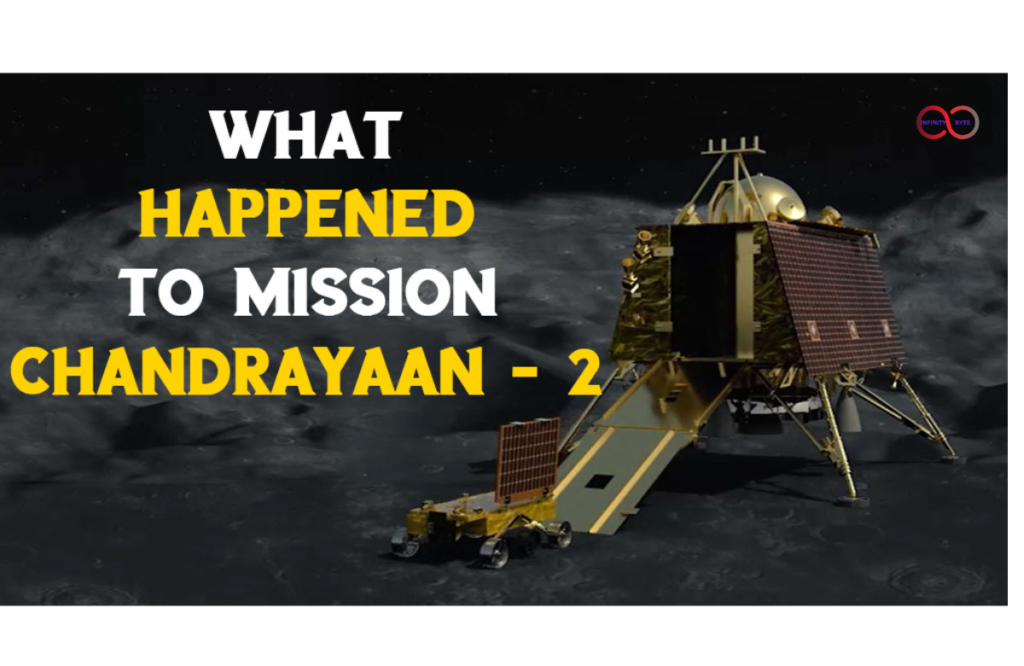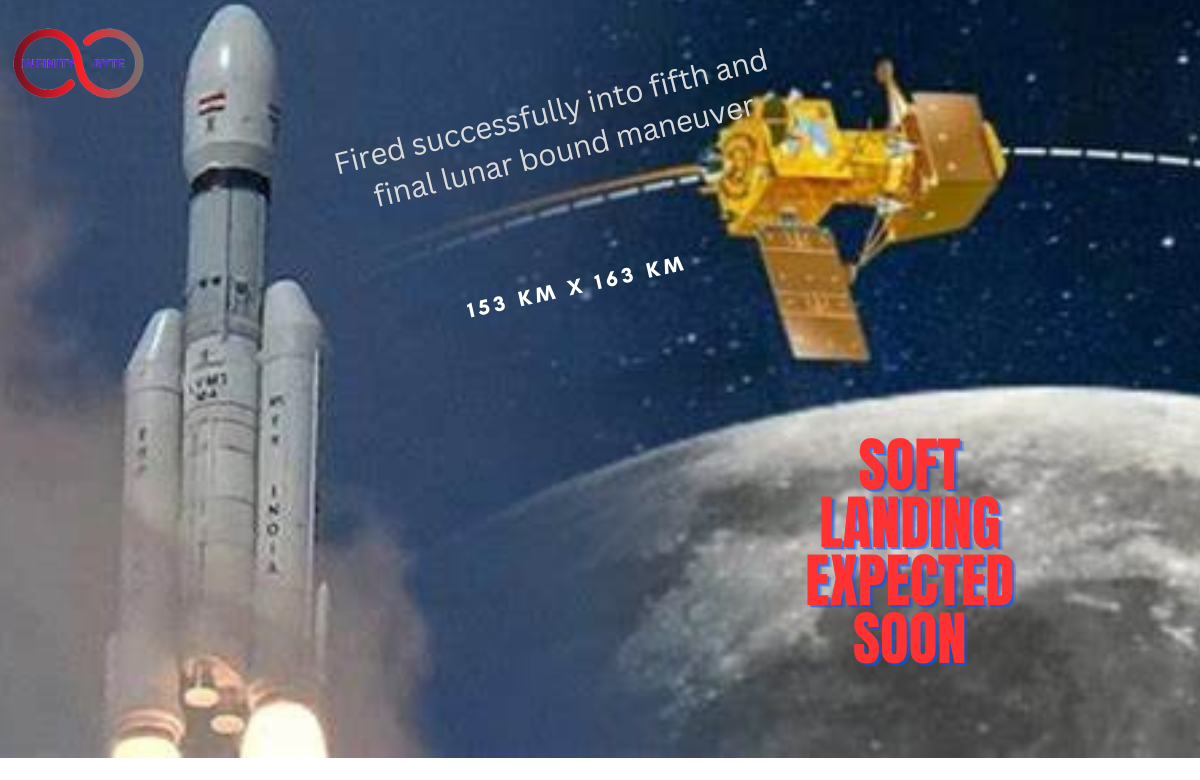Chandrayaan 3 has successfully fired into final and fifth lunar orbit maneuver Today (August 16,2023). Read to know more.

By Infinity Byte: Every Indian is ambitiously waiting for the Chandrayaan 3’s historic landing on the moon. This is the pride of our Country.
Now, this spacecraft has successfully entered into the final orbit of the moon by reducing the speed and getting much closer to the moon. Chandrayaan 3 has made few concentric circles around the moon, by gradually reducing the speed and altitude it is planned to land on the moon. This is the key task in the mission.
As per the data, the Project director of this great mission is P. Veera Muthuvel.
Chandrayaan 3- Latest Update
As per the ISRO tweet, on August 13, Orbit circularization phase is planned. The spacecraft has performed the lunar orbit rotation at 150km x 177km. This is considered to be precise maneuver. Next operation was planned on August 16 around 8:30 AM.
As scheduled, ISRO successfully fired Chandrayaan 3 into an orbit of 153km x 163km. This is the fifth and also the final round around the moon.
Next, the landing of the spacecraft on to the moon is to be planned. For this, the first thing to do is the lander module and propulsion module need to be separated.
As per ISRO, this separation is planned on August 17. The Propulsion module and lander modular will part their ways through this separation process.
ISRO tweeted as “Today’s successful firing, needed for a short duration, has put Chandrayaan-3 into an orbit of 153 km x 163 km, as intended. With this, the lunar bound maneuvres are completed. It’s time for preparations as the Propulsion Module and the Lander Module gear up for their separate journeys. Separation of the Lander Module from the Propulsion Module is planned for August 17, 2023.”
Chandrayaan-3 Mission:
— ISRO (@isro) August 16, 2023
Today’s successful firing, needed for a short duration, has put Chandrayaan-3 into an orbit of 153 km x 163 km, as intended.
With this, the lunar bound maneuvres are completed.
It’s time for preparations as the Propulsion Module and the Lander Module… pic.twitter.com/0Iwi8GrgVR
Chandrayaan 2 Failure Phase

Before the Chandrayaan 3 mission, Chandrayaan 2 was launched on July 22,2019. The Translunar injection of Chandrayaan 2 was made on August 13, 2019. after 29 days of launch, it entered into the lunar orbit. On September 1,2019 final lunar bound maneuver was made. On September 2,2019 the separation of Vikram lander was done.
On 6th September, Vikram landing was scheduled but it was not successful as the trajectory deviation started at 2.1 km altitude, telemetry was also lost before seconds of touchdown.
ISRO chairman K.Sivan stated, “it must have been a hard landing.” However, it contradicted initial claims from anonymous ISRO officials that the lander was intact and lying in a tilted position.
Chandrayaan 3 Facts
- Chandrayaan-3 is a follow-on mission to Chandrayaan-2.
- Chandrayaan-3 is a follow-on mission to Chandrayaan-2.
- Launched by LVM3 from Srihari Kota, Andhra Pradesh.
- The Lander will have the capability to soft land at a specified lunar site and deploy the Rover.
- The Lander and the Rover have scientific payloads to carry out experiments on the lunar surface.
- Objectives of Chandrayaan-3 are to demonstrate a safe and soft landing, roving on the moon, and conducting in-situ scientific experiments.
- Rover payloads include an Alpha Particle X-ray Spectrometer (APXS) and a Laser Induced Breakdown Spectroscope (LIBS), which are utilized to determine the elemental composition near the landing site.
- The lander is equipped with various payloads, including Chandra’s Surface Thermophysical Experiment (ChaSTE) for measuring thermal conductivity and temperature, the Instrument for Lunar Seismic Activity (ILSA) to observe seismicity in the landing area, and the Langmuir Probe (LP) to estimate plasma density and its fluctuations.
- Additionally, a passive Laser Retroreflector Array from NASA is also present on the lander for lunar laser ranging studies.

Chandrayaan 3- Mistakes ISRO don’t want to repeat.
For the Chandrayaan-3 mission, ISRO has expanded the landing area and has chosen a spot with a 4km x 2.4 km area, instead of a 500 square meter.
The ISRO scientists have added more fuel to the lander this time.
Changes have been with the lander’s design. The lander has no thrusters and will operate on four thrusters only. Its legs have also been made stronger to absorb the impact of landing.
To know more in detail CLICK HERE



